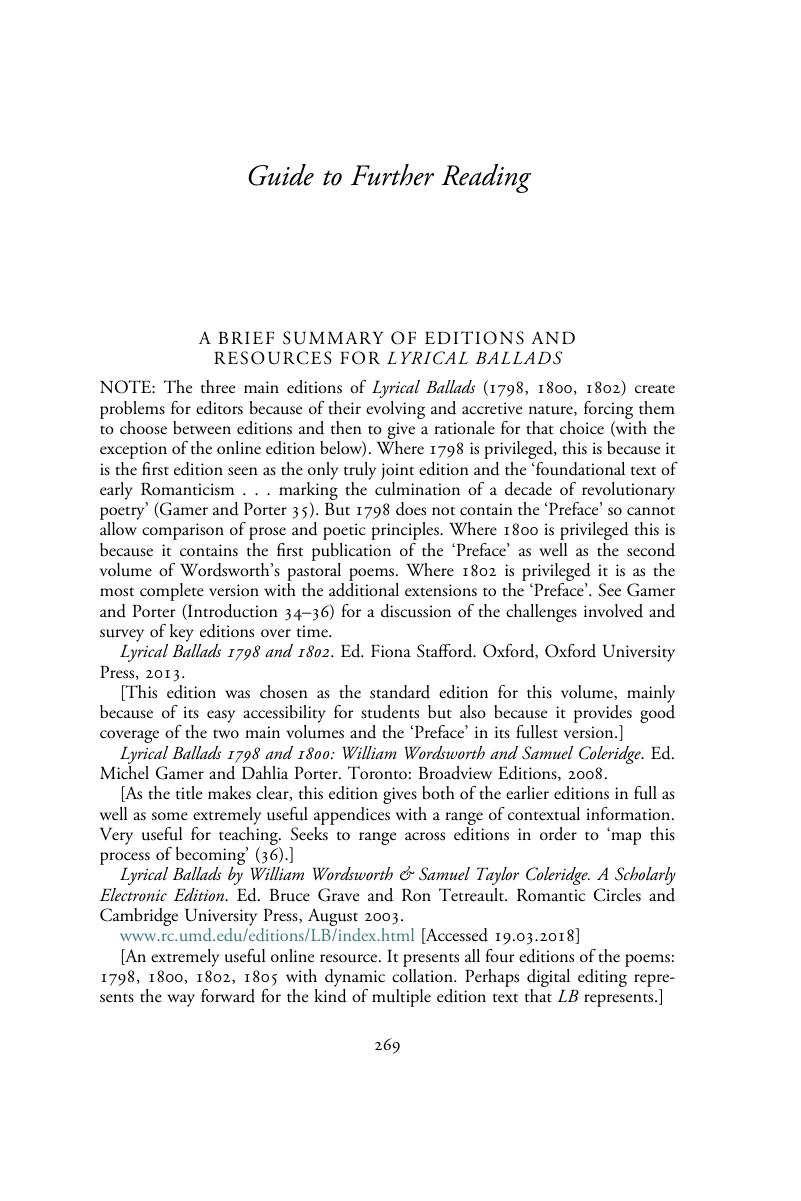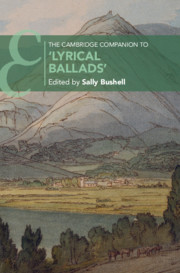Book contents
- The Cambridge Companion to ‘Lyrical Ballads’
- The Cambridge Companion to ‘Lyrical Ballads’
- Copyright page
- Dedication
- Contents
- Contributors
- Acknowledgements
- Chronology
- Abbreviations
- Introduction
- Part I Part and Whole
- Part II Subjects and Situations from Common Life
- Part III Feeling and Thought
- Part IV Language and the Human Mind
- Part V A Global Lyrical Ballads
- Guide to Further Reading
- Index
- References
Guide to Further Reading
Published online by Cambridge University Press: 08 February 2020
- The Cambridge Companion to ‘Lyrical Ballads’
- The Cambridge Companion to ‘Lyrical Ballads’
- Copyright page
- Dedication
- Contents
- Contributors
- Acknowledgements
- Chronology
- Abbreviations
- Introduction
- Part I Part and Whole
- Part II Subjects and Situations from Common Life
- Part III Feeling and Thought
- Part IV Language and the Human Mind
- Part V A Global Lyrical Ballads
- Guide to Further Reading
- Index
- References
Summary

- Type
- Chapter
- Information
- The Cambridge Companion to 'Lyrical Ballads' , pp. 269 - 276Publisher: Cambridge University PressPrint publication year: 2020



